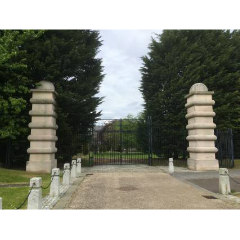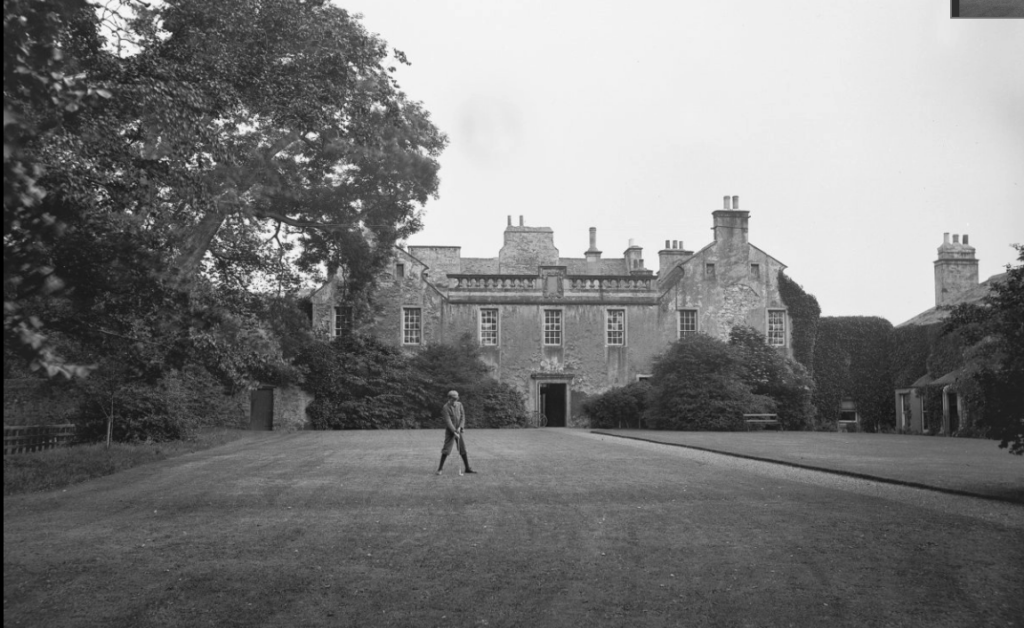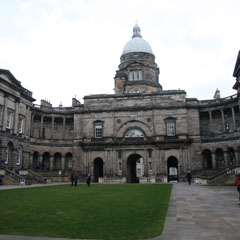Caroline Park Avenue, Edinburgh EH5 1QJ

© RCAHMS, 1989
Caroline Park House, originally known as Royston House, was built around 1585 by Andrew Logan. In 1683, it was bought by Sir George Mackenzie, 1st Viscount of Tarbat, who had the house completely rebuilt as a quadrangle, and moved its entrance to the south side, facing Edinburgh.
In 1739 the house and its estate was sold to John Campbell, 2nd Duke of Argyll, who renamed it Caroline Park, in honour of his eldest daughter. The house was further altered in the 1740s by architect William Adam, father of neo-classical architects Robert, John and James Adam.


© Courtesy of HES (Francis M Chrystal Collection)
In 1742, Caroline Campbell married Francis Scott, Earl of Dalkeith. The house and estate were eventually inherited by their son Henry Scott, 3rd Duke of Buccleuch, in 1793 – a pivotal event in Granton’s history. Subsequent Tenants of the house were; Archibald Cockburn, father of Lord Cockburn – who was opposed to the development of Granton harbour, and Alicia, Lady John Scott, composer of the tune Annie Laurie, to which the romantic words of William Douglas, 17th Century Scottish poet, were set.

© Wikipedia
Increasingly disturbed by local industrial development, Caroline Park House became less attractive as a formal residence. The house was eventually leased as an office to AB Fleming, a nearby printing ink and chemicals company. In 1872 the company bought the house outright. It was their headquarters until 1966, when they relocated to Corstorphine. Currently, Caroline Park House is in private ownership. It is a Category A Listed Building, notable for its French-influenced south elevation, and its fine internal features.



